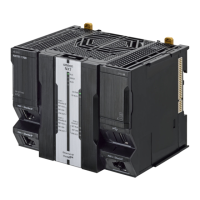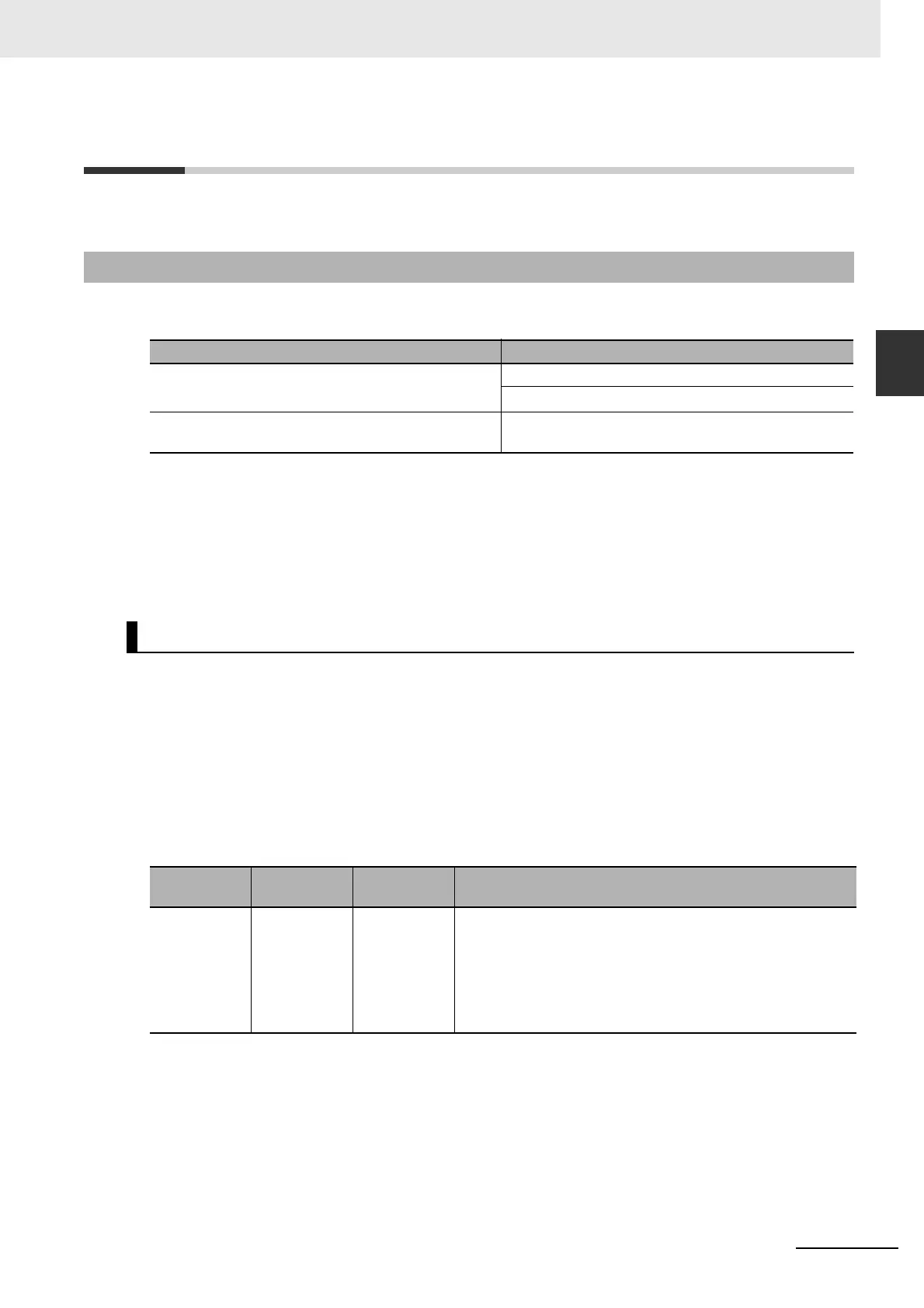2-5
2 Motion Control Configuration and Principles
NJ/NX-series CPU Unit Motion Control User’s Manual (W507)
2-3 Motion Control Principles
2
2-3-1 CPU Unit Tasks
2-3 Motion Control Principles
This section provides information on the CPU Unit tasks and how they relate to motion control.
Tasks are attributes of programs that determine the execution conditions and sequence of the pro-
grams. The NJ/NX-series CPU Units support the following tasks.
*1 You can use the priority-5 periodic task only with NX701 CPU Units.
*2 You cannot use the priority-16 periodic task on NX102 CPU Units and NX1P2 CPU Units.
*3 A CPU Unit with unit version 1.03 or later and Sysmac Studio version 1.04 or higher are required to use event
tasks.
Refer to the NJ/NX-series CPU Unit Software User’s Manual (Cat. No. W501) for details on programs,
tasks, and setting methods.
The NX701 CPU Unit can execute the primary periodic task and the priority-5 periodic task in parallel
with a multi-core processor.
The NX102 CPU Unit, NX1P2 CPU Unit, and NJ-series CPU Unit cannot execute more than one task in
parallel.
Tasks have an execution priority. Tasks with the highest execution priority are executed first. If the exe-
cution conditions are met for another task with a higher execution priority while a task is under execu-
tion, the task with the higher execution priority is given priority in execution. The following table lists the
tasks in which you can use motion control instructions and the task priorities for the NJ/NX-series CPU
Unit. You cannot use motion control instructions in event tasks.
2-3-1 CPU Unit Tasks
Type of task Task name
Tasks that execute programs at a fixed period Primary periodic task
Priority-5
*1
, -16
*2
, -17, and -18 periodic tasks
Tasks that execute programs only once when the exe-
cution conditions for the tasks are met
Event task (execution priority: 8 and 48)
*3
Types of Tasks and Task Priority
Type of task
Number of
tasks
Priority Operation
Primary
periodic task
1 4 This task executes I/O refreshing, programs, and motion
control in the specified task period. This task has the highest
execution priority of all tasks and can be executed quickly and
precisely. Therefore, this task is best suited for situations when
synchronized control or highly responsive control is required.
Use the primary periodic task to execute all control with a
single task.

